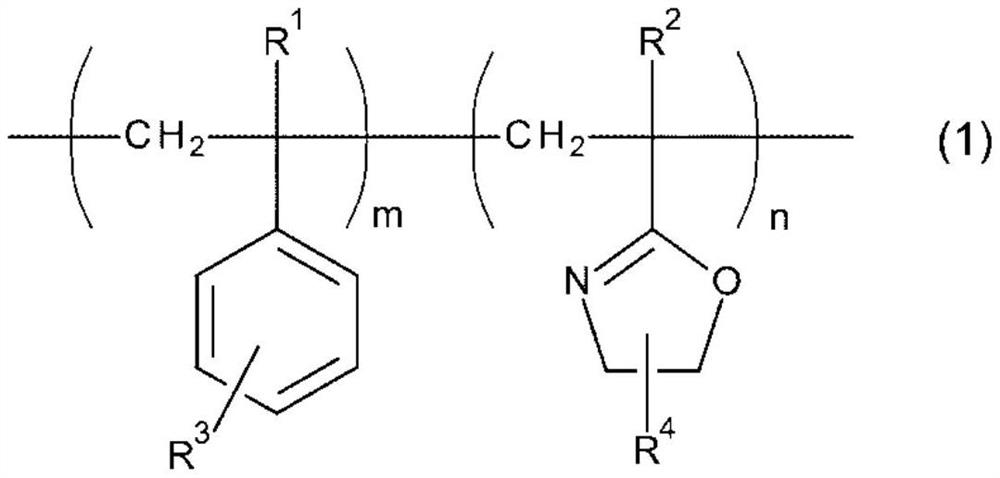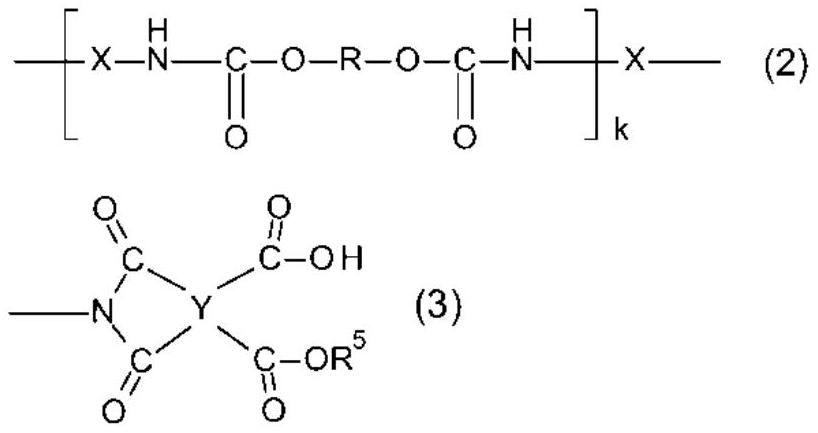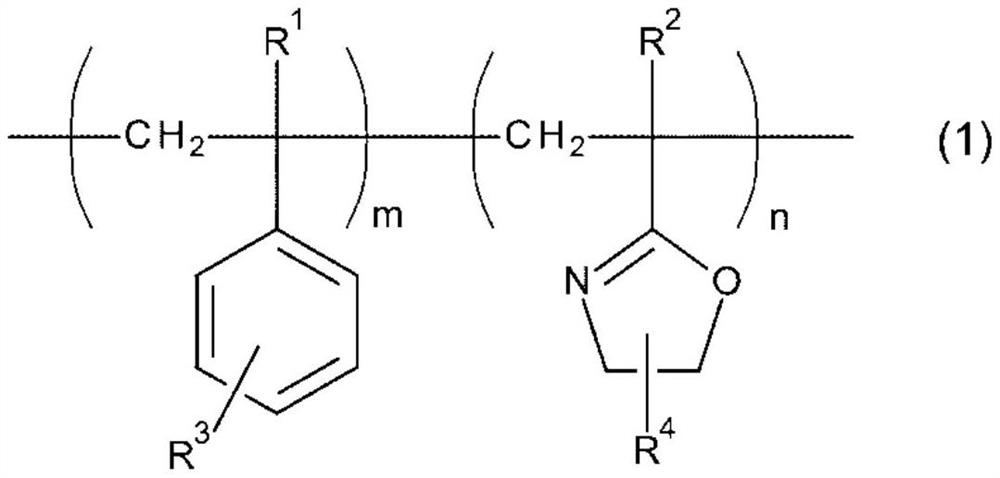Thermosetting resin composition, thermosetting resin film, thermosetting film, laminate, and printed wiring board and method for producing same
A resin composition, thermosetting technology, applied in the direction of multi-layer circuit manufacturing, printed circuit, printed circuit components, etc., can solve the problems of difficult circuit design, transmission speed signal waveform interference, electrical signal attenuation, etc., to achieve excellent heat resistance , the effect of low dielectric constant and dielectric loss tangent
- Summary
- Abstract
- Description
- Claims
- Application Information
AI Technical Summary
Problems solved by technology
Method used
Image
Examples
preparation example Construction
[0054] (Preparation of terminal isocyanate urethane oligomer)
[0055] A urethane oligomer having an isocyanate group at a terminal can be obtained by reacting a diol compound and a diisocyanate compound so that the diisocyanate compound becomes an excess ratio. The compounding ratio of a diol compound and a diisocyanate compound should just be more than 1 as long as the ratio (isocyanate group / hydroxyl group) of the number of isocyanate groups to the number of hydroxyl groups. The ratio of isocyanate group / hydroxyl group is preferably 1.1 to 2.0, more preferably 1.15 to 1.8, still more preferably 1.2 to 1.6. When the ratio of isocyanate group / hydroxyl group is 1 or less, the ratio of terminal isocyanates becomes low. When the ratio of isocyanate group / hydroxyl group is large, the reaction does not proceed at the stage where diisocyanate is bonded to both ends of one molecule of diol, so the molecular weight of the oligomer does not increase, and sometimes the heat resistance...
Embodiment
[0150] The present invention will be specifically described below by showing examples, but the present invention is not limited to these examples.
Synthetic example 1
[0153] (Synthesis of urethane prepolymer)
[0154] 16.0 g of triethylene glycol dimethyl ether and 20.7 g (0.100 mol) of norbornene diisocyanate were charged into a reaction vessel as a polymerization solvent, and heated to 80° C. while stirring under a nitrogen stream to dissolve them. To this solution, 50.0 g (0.025 mol) of polycarbonate diol (manufactured by Asahi Kasei "DURANOL T5652") and 8.1 g (0.050 mol) of 2,2-bis(hydroxymethyl)butyric acid were dissolved in three After adding the obtained solution to 40.0 g of ethylene glycol dimethyl ether, it was stirred at 80° C. for 5 hours to obtain an isocyanate-terminated urethane prepolymer having a carboxyl group in the molecule.
[0155] (Synthesis of terminal acid anhydride urethane imide oligomer)
[0156] 40.0 g of triethylene glycol dimethyl ether and 2,2-bis[4-(3,4-dicarboxyphenoxy)phenyl] propane dianhydride (BPADA) 52.0 g (0.100 mol) were put into the reaction vessel, Heat to 80°C and stir. The above-mentioned uret...
PUM
| Property | Measurement | Unit |
|---|---|---|
| The average particle size | aaaaa | aaaaa |
| Acid value | aaaaa | aaaaa |
| Acid value | aaaaa | aaaaa |
Abstract
Description
Claims
Application Information
 Login to View More
Login to View More - R&D Engineer
- R&D Manager
- IP Professional
- Industry Leading Data Capabilities
- Powerful AI technology
- Patent DNA Extraction
Browse by: Latest US Patents, China's latest patents, Technical Efficacy Thesaurus, Application Domain, Technology Topic, Popular Technical Reports.
© 2024 PatSnap. All rights reserved.Legal|Privacy policy|Modern Slavery Act Transparency Statement|Sitemap|About US| Contact US: help@patsnap.com










